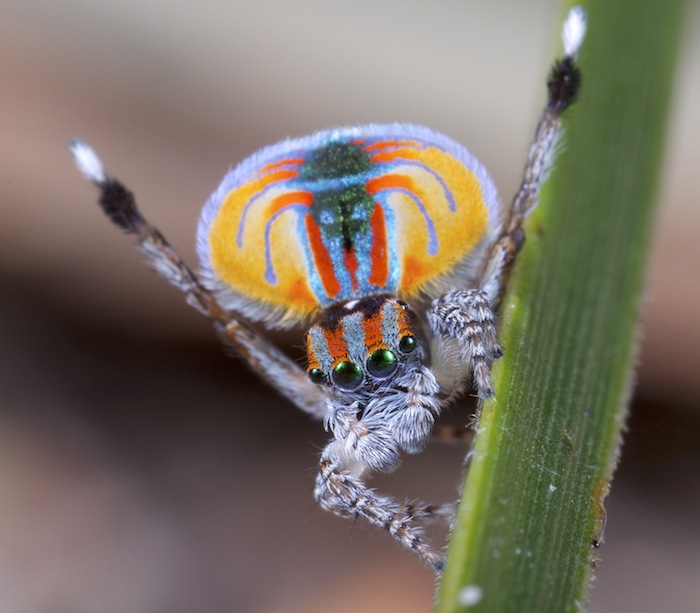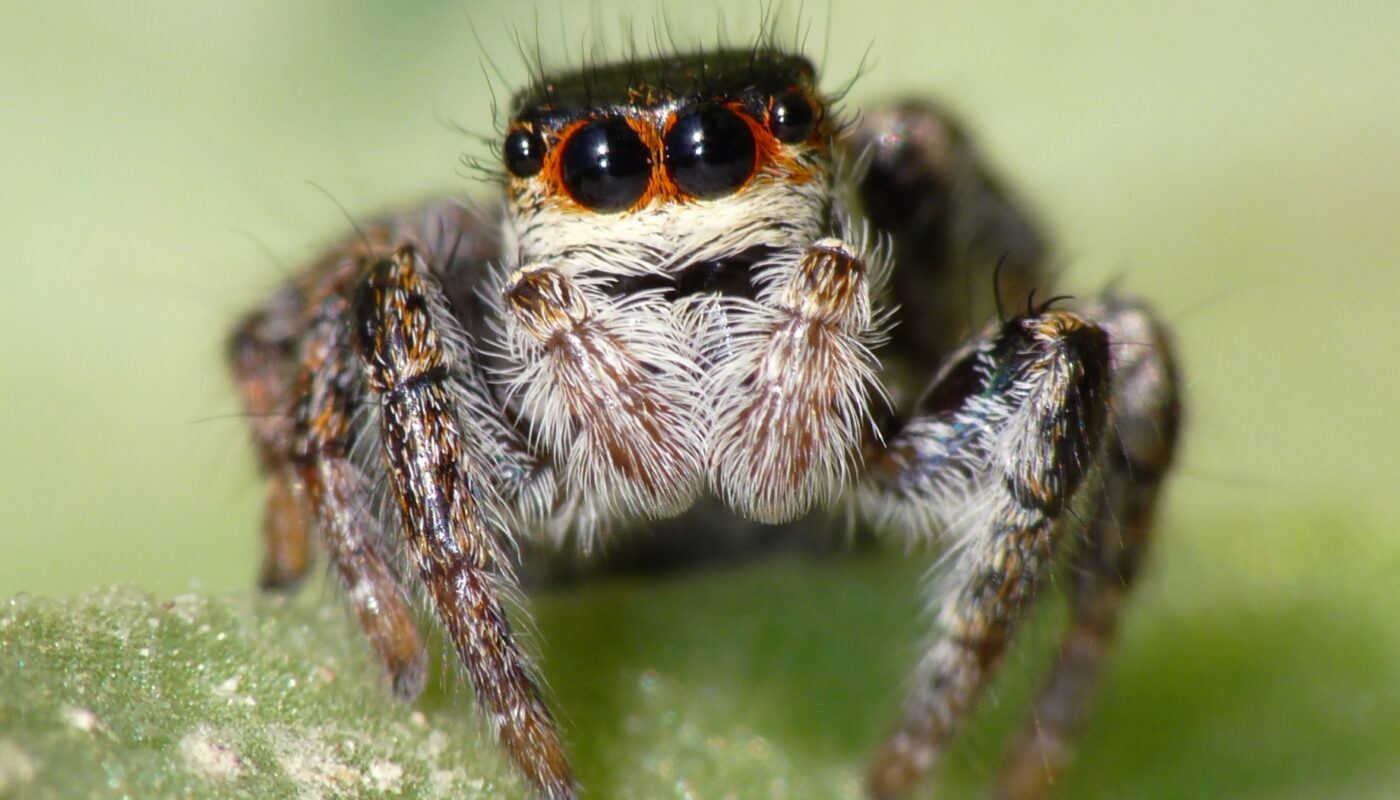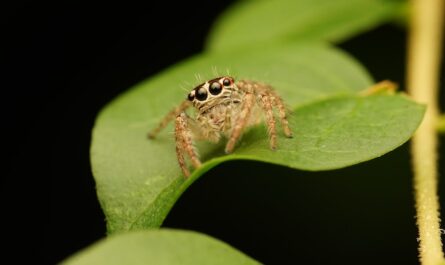Introduction
Unveiling the World of Jumping Spider Pets
Prepare to enter a tiny, intriguing world brimming with activity, excitement, and multiple eyes! This world belongs to jumping spider pets – arachnids known for their spry agility, surprising intelligence, and captivating behaviors.
Why Consider a Jumping Spider as a Pet?
The answer lies in their charm, ease of care, and endless hours of educational entertainment. These petite creatures are fascinating pets that require minimal space, love to explore, and display a level of interaction that is uncommon among invertebrates.
Preview of What’s to Come
Join us as we uncover the thrilling adventure of keeping jumping spider pets, from understanding their mystique to setting up the ideal habitat, and from discussing their diet to exploring ethical considerations.

Unraveling the Jumping Spider Mystique
A Closer Look at Jumping Spiders: Characteristics and Traits
Jumping spiders are a group of spiders that stand out for their agile leaps and exceptionally sharp vision. They are petite creatures, usually measuring between 3mm to 25mm, adorned with eight eyes and decorated in a dazzling variety of patterns and colors.
The Science Behind Their Unique Jumping Ability
Their remarkable jumping skill, which gives them their name, is a result of a unique internal hydraulic system. By adjusting the pressure of fluids in their legs, these spiders can launch themselves up to 50 times their body length!
Understanding the Spider’s Fascinating Vision System
Arguably the most compelling trait of these spiders is their keen vision, largely attributed to their principal pair of forward-facing eyes. This exceptional vision is essential for their hunting prowess and intricate mating dances.
Species of Jumping Spiders: A Petite Diversity
Common Species Found in Pet Trade
There are more than 5,000 species of jumping spiders, with some popular pet choices including the bold Phidippus audax, the elegant Heliophanus spp., and the vibrant Cosmophasis umbratica.
Highlighting Their Unique Differences
Each species brings something unique to the table – be it the striking coloration of the Cosmophasis umbratica, the dramatic mating display of the Habronattus pyrrithrix, or the expressive “eyebrows” of the Evarcha arcuata.
Choosing the Right Species for You
When selecting a jumping spider pet, consider factors like availability, habitat requirements, and individual personality. Research thoroughly to ensure you can provide the care each species needs.
Bringing Your Tiny Dynamo Home
Where to Source Jumping Spiders
You can source jumping spiders from local pet stores, online breeders, or spider enthusiast communities. Always ensure that your pet is captive-bred to discourage unsustainable wildlife trade.
Preparing for Your Jumping Spider: Essentials You Need
Before bringing your new pet home, equip yourself with essentials like a secure terrarium, a misting bottle for humidity, and suitable prey items.
Introducing the Jumping Spider to its New Environment
Introducing your spider to its new home should be done carefully. Place the spider gently into the terrarium and allow it time to explore and settle in.
Creating a Comfortable Habitat
Understanding the Spider’s Natural Habitat
Recreating a jumping spider’s natural habitat requires understanding of the spider’s origin. Many species favor a balance of hideouts, climbing structures, and open space, resembling their typical dwelling in tree bark, leaves, or crevices.
Setting Up the Terrarium
Setting up your terrarium should mimic these natural conditions. A combination of substrate, cork bark, live or artificial plants, and ample vertical space will create a suitable home.
Common Mistakes to Avoid When Setting Up Your Pet’s Home
Common mistakes to avoid include overcrowding the space, insufficient ventilation, and inappropriate humidity levels. Always ensure a balance of elements and monitor environmental conditions regularly.
Nutrition: What Does Your Jumping Spider Eat?
A Look at the Spider’s Natural Diet
Jumping spiders are opportunistic hunters in the wild, preying primarily on insects, other spiders, and occasionally small invertebrates.
Feeding Your Jumping Spider: A Practical Guide
In captivity, a diet of small insects such as fruit flies, pinhead crickets, or small moths will keep your spider healthy. Feed them every 2-3 days, and monitor their hunting behavior for signs of health and vigor.
Understanding Your Pet’s Feeding Habits
Jumping spiders are daytime hunters. They enjoy stalking and pouncing on their prey, an entertaining display for the spider enthusiast.
Jumping Spider Behavior and Interaction
Observing Your Pet’s Unique Behaviors
Observing your pet’s behaviors, from their intricate dances to their curious exploration, offers endless fascination and gives insight into their wellbeing.
Can Jumping Spiders Recognize Their Owners?
While there’s no concrete evidence that spiders can recognize their owners, many jumping spider enthusiasts swear by their pets’ seeming recognition and response to them.
Ways to Interact with Your Jumping Spider
Interaction should be respectful and minimal to avoid stress. Watching your spider and providing a rich environment for exploration is often sufficient.
Health and Longevity: Caring for Your Jumping Spider
Understanding Your Jumping Spider’s Lifespan
Jumping spiders typically live for about a year, with some species living up to two years in optimal conditions.
Common Health Issues and Preventative Measures
Common health issues include dehydration, malnutrition, and injury. Regular care, appropriate feeding, and a suitable habitat can prevent most health problems.
When to Consult a Veterinarian
Consult a veterinarian if your spider exhibits unusual behaviors, lethargy, or visible physical changes. Unfortunately, arachnid-specific veterinarians are rare, so finding a vet with exotic pet experience is crucial.
Breeding Jumping Spiders: A Leap of Love
Understanding Jumping Spider Mating Behaviors
Jumping spiders have elaborate mating dances, where the male must impress the female with his moves to avoid becoming her meal!
Conditions for Breeding
Breeding conditions often require a specific environment, adequate nutrition, and careful introduction of the mating pair.
Care for Jumping Spider Eggs and Spiderlings
Egg sacs should be kept in controlled conditions, and spiderlings require careful feeding and separate housing to prevent cannibalism.
Ethical Considerations
The Debate on Keeping Jumping Spiders as Pets
The idea of keeping jumping spiders as pets is one that stirs debate among enthusiasts and conservationists alike. On one side of the coin, proponents argue that these spiders make fascinating pets due to their unique behaviors and minimal care requirements. Studies also indicate that pet ownership increases interest in spiders, leading to greater appreciation and conservation efforts.
However, critics of keeping jumping spiders as pets often point out that doing so could contribute to the decline of wild populations, especially if captured from nature and brought into captivity directly. Furthermore, owners may struggle to meet all their specific care requirements and thus lead to potential animal welfare concerns.
Responsible Pet Ownership and Environmental Conservation
Responsibility plays an integral part of pet ownership, particularly with creatures such as jumping spiders. A responsible pet owner ensures their spiders receive proper accommodations in terms of habitat, diet and care.
Firstly, sourcing is key. One should ensure that their pet spider is acquired through ethical means, ideally from a reputable breeder, to avoid contributing to the decline of wild populations.
Moreover, providing the correct care for your pet spider is critical. This includes setting up an appropriate living environment, feeding them a proper diet, and regularly monitoring their health.
On a larger scale, pet owners play an integral part in environmental conservation. They can do this by educating themselves and others on the unique creatures inhabiting ecosystems they call home, advocating for their protection, and supporting conservation initiatives.
Pet owners play an essential role in safeguarding not only their individual pet’s wellbeing but also preserving biodiversity and creating a healthier, balanced environment.
Summary and Final Thoughts
Revisiting the Journey of Keeping a Jumping Spider as a Pet
From unraveling the mystique of these tiny wonders to providing them with a loving home, keeping a jumping spider as a pet is a unique and rewarding journey.
Challenges and Rewards of Pet Ownership
Though there are challenges, such as understanding their behaviors and meeting their specific needs, the rewards include gaining a fascinating window into an often unseen world.
Encouragement for Prospective Jumping Spider Pet Owners
If you’re considering a jumping spider as a pet, remember that responsible pet ownership contributes to a deeper understanding and appreciation of our natural world.
Frequently Asked Questions
Are Jumping Spiders Dangerous?
Jumping spiders are harmless to humans. They can bite in self-defense, but their venom is not dangerous unless you have a specific allergy.
How Do I Handle My Jumping Spider?
Handle your spider sparingly and gently to avoid causing stress or injury.
Can Jumping Spiders Live with Other Pets?
Jumping spiders are solitary animals and should be kept alone. They might see other pets as a threat or prey.
How Often Should I Feed My Jumping Spider?
Feed your spider every 2-3 days, depending on its size and activity level.
What Should I Do if My Jumping Spider Escapes?
If your spider escapes, don’t panic. Create a quiet environment, look carefully around the area, and remember they tend to move upwards.

